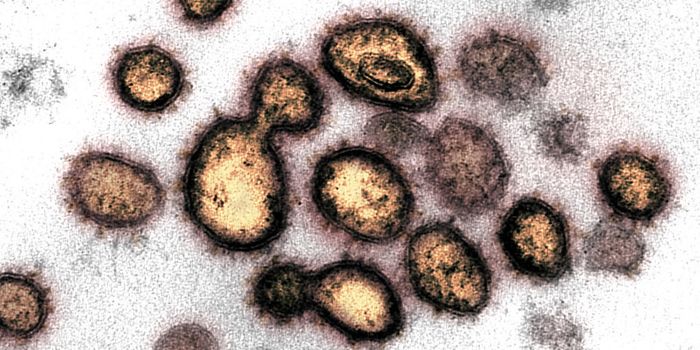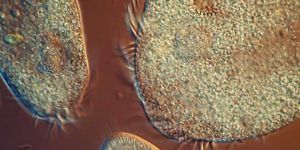
Researchers have found a remarkable-and heretofore unseen-way in which viruses disperse between cells. Multiple polioviruses (a form of enterovirus) navigate in sync inside a membrane-enclosed sac, in unison reaching a cell they then proceed to infect.
In this way-travelling in clusters-the viruses infect the cell more deftly than solitary viruses.
The discovery rewrites a key maxim of virology, which held that viruses act as separate and distinct infectious agents. This newfound process might come in to play in other enteroviruses that cause myocarditis (heart inflammation), polio, colds, and the respiratory illness caused by Enterovirus D68.
The research team, helmed by Nihal Altan-Bonnet, PhD, the Earl Stadtman Investigator in the National Heart, Lung, and Blood Institute's Laboratory of Host-Pathogen Dynamics, has published their findings in the journal Cell. Altan-Bonnet is working on identifying the common mechanisms by which different RNA viruses generate specialized replication organelles, and to identify shared properties/pathways of these organelles that make viral replication easier.
After entering the uninfected cell, the virus clusters have an advantage over viruses traveling solo, and are more capable of surviving and successfully reproducing. An autophagosome-like organelle envelops multiple viral particles after the viruses reproduce themselves within an infected cell. Counter to the usual process where autophagosomes consume mangled proteins or surplus cellular parts, and marry with a lysosome (which holds enzymes that dismantle these items), autophagosomes that had swallowed enteroviruses did not merge with a lysosome instead, were redirected to the host cell's plasma membrane. There, an effective stealth ploy comes into play. When the viruses conceal themselves in a membrane originating from a cellular organelle, these particles appear camouflaged as they move between cells-masking their role as foreign invaders. Once enveloped in the membrane, the clusters are free to infect other cells, and then leave the cell, without rupturing it.
The researchers aimed to gain insight into viral transmission between cells, and their findings may lead to ways to foil enteroviral infections.
To view highlights of the journal article, titled "Phosphatidylserine Vesicles Enable Efficient En Bloc Transmission of Enteroviruses," click here: bit.ly/1E8GQKP
Image: Myocarditis is inflammation and weakness of the heart muscle usually caused by a viral infection that reaches the heart, such as the flu virus, Coxsackie virus, and adenovirus. Myocarditis can damage the heart muscle causing it to become thick and swollen. This leads to symptoms of heart failure. Myocarditis may also occur during or after other viral or bacterial infections such as polio, rubella, Lyme disease, and others. [Photo credit: National Library of Medicine, NIH]
 Researchers have found a remarkable-and heretofore unseen-way in which viruses disperse between cells. Multiple polioviruses (a form of enterovirus) navigate in sync inside a membrane-enclosed sac, in unison reaching a cell they then proceed to infect.
Researchers have found a remarkable-and heretofore unseen-way in which viruses disperse between cells. Multiple polioviruses (a form of enterovirus) navigate in sync inside a membrane-enclosed sac, in unison reaching a cell they then proceed to infect.







